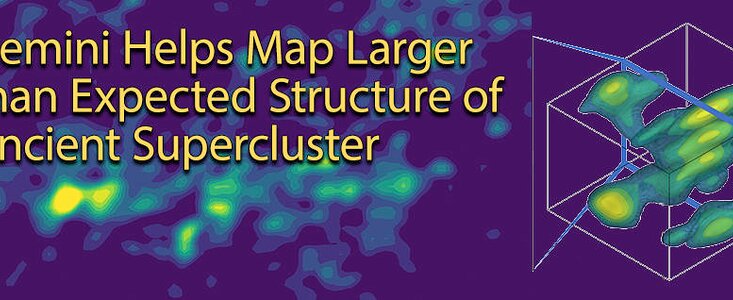Gemini Helps Map Larger than Expected Structure of Ancient Supercluster
10 November 2019
In a recent collaborative study, Gemini Observatory and Subaru Telescope uncover the massive (and larger than expected) structure of a distant supercluster. Mapping the formation of these ancient superclusters is a critical step in understanding the dark matter and dark energy that shape these structures. Read an excerpt about this research from Subaru Telescopeʻs science highlight below.
A team of astronomers used the Subaru Telescope and Gemini North telescope to reveal that a well-known distant supercluster is part of a larger structure at least twice as extended as what was already known. The galaxies associated with the supercluster are thought to have formed simultaneously over a vast area and then evolved to their observed states.
Using the Gemini Multi-Object Spectrograph (GMOS) Gemini North telescope and the Faint Object Camera and Spectrograph (FOCAS) on Subaru Telescope, the team has revealed that the supercluster CL1604, a distant supercluster located about 7.3 billion light-years away, is a large-scale 3-D structure extending over about 160 million light-years in the north-south direction. This is more than two times more extended than what was already known. Until now, we saw merely the “tip of the iceberg” of the supercluster. The wide-field capability of the Subaru Telescope enabled us to survey the whole of the supercluster and the Gemini North telescope played a critical role in confirming the structures. This is the outcome of the good synergy of the telescopes of the Maunakea observatories.
Links
- Read the original release on the Gemini Observatory website
- Read the full science highlight from Subaru Telescope here.
- These results were published in Publications of the Astronomical Society of Japan (Hayashi et al., “The whole picture of the large-scale structure of the CL1604 supercluster at z∼0.9”). A preprint is available here.


